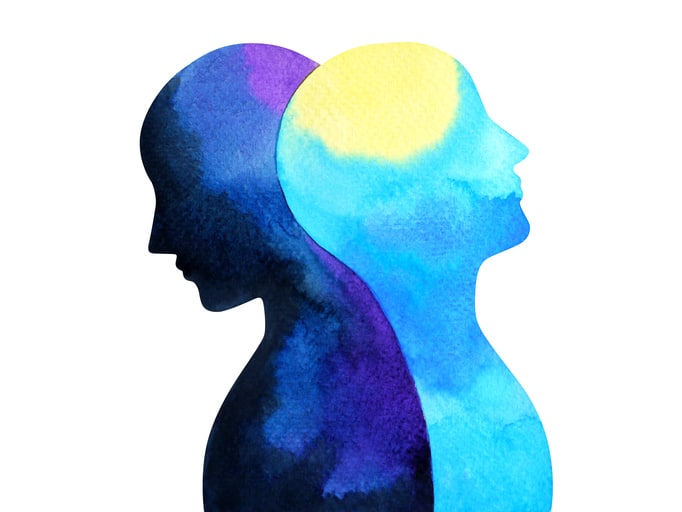Bipolar disorder (BD) is a psychiatric condition causing acute dysfunctional mood states and emotion regulation. Specific neuropsychological features are often present also among patients in euthymic phase, who do not show clear psychotic symptoms, and for whom the characterization from functional magnetic resonance imaging (fMRI) is very limited. This study aims at identifying the neural and behavioral correlates of the default mode network (DMN) using the fractional amplitude of low frequency fluctuations (fALFF). Eighteen euthymic BD patients (10 females; age = 54.50 ± 11.38 years) and sixteen healthy controls (HC) (8 females; age = 51.16 ± 11.44 years) underwent a 1.5T fMRI scan at rest. The DMN was extracted through independent component analysis. Then, DMN time series was used to compute the fALFF, which was correlated with clinical scales. From the between-group comparison, no significant differences emerged in correspondence to regions belonging to the DMN. For fALFF analysis, we reported significant increase of low-frequency fluctuations for lower frequencies, and decreases for higher frequencies compared to HC. Correlations with clinical scales showed that an increase in higher frequency spectral content was associated with lower levels of mania and higher levels of anxious symptoms, while an increase in lower frequencies was linked to lower depressive symptoms. Starting from our findings on the DMN in euthymic BD patients, we suggest that the fALFF derived from network time series represents a viable approach to investigate the behavioral correlates of resting state networks, and the pathophysiological mechanisms of different psychiatric conditions.Copyright © 2021 Elsevier Ltd. All rights reserved.
Default mode network shows alterations for low-frequency fMRI fluctuations in euthymic bipolar disorder.


